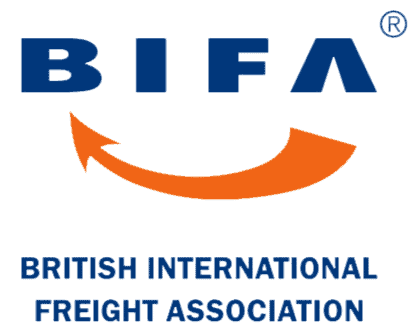Handling Unit (HU)
What Is a Handling Unit?
A handling unit (HU) is a single, moveable package of goods that can be tracked, stored, or transported as one item throughout the logistics process. It usually consists of one or more products securely packed together in standard packaging such as pallets, crates, or cartons.
The term is commonly used in freight forwarding and warehouse operations to describe packages that are prepared for easy movement and clear identification.
Table of Contents
Why Handling Units Matter
For UK businesses involved in shipping, supply chain management, or warehousing, understanding the role of handling units is essential. Whether you are sending a single pallet to Europe or managing multiple consignments by air or sea, handling units help to organise and control the movement of goods.
Properly managed HUs reduce delays, improve accuracy, and make the overall freight process more predictable. They are also crucial for managing inventory and providing real-time updates on delivery status.
Key Characteristics of a Handling Unit
Handling units are not simply boxes. Each one serves a functional role in the logistics chain and has several defining features:
- Unique identification: Each HU is given a serial number, barcode, or RFID tag so it can be scanned and tracked from origin to destination.
- Aggregation: A handling unit may contain multiple items, grouped together to simplify transport and reduce handling time.
- Packaging format: HUs come in various forms such as pallets, containers, boxes, and crates, chosen for durability and efficiency.
- Item data: Each HU includes key details such as weight, dimensions, contents, and any specific handling requirements.
- Label structure and creation: A handling unit is created from a predefined HU template, which sets out the packing structure and other important details. Once the HU is formed, it is labelled using a format such as EAN128, which can be read by scanners. This label includes the HU’s unique identification number. If the HU contains subordinate units, the label will also list the identification numbers of these sub-HUs, making the entire unit traceable at every level.
These characteristics make it easier to integrate HUs into warehouse systems, customs checks, and delivery schedules.
How Handling Units Improve Logistics Operations
Handling units simplify logistics by consolidating smaller items into larger, manageable packages. This improves efficiency and consistency throughout the supply chain. Key benefits include:
- Faster loading and unloading: Staff can move goods more quickly when they are grouped and labelled as HUs.
- Lower error rates: By reducing the number of individual items being handled, there is less risk of damage or misplacement.
- Better tracking: Barcodes and scanning systems provide real-time location data, helping businesses manage inventory and deliveries.
Common Types of Handling Units
Handling units vary depending on the goods being shipped and the method of transport. Common examples include:
- Pallets
- Crates
- Boxes
- Containers
- Skids
Each of these offers different benefits in terms of load stability, protection, and handling.
How HUs Support the Supply Chain
Using handling units in a consistent and standardised way helps logistics teams improve performance across the supply chain. Some of the key advantages are:
- Standardisation: Makes it easier to transfer goods between transport providers, warehouses, and delivery hubs.
- Speed: Simplifies warehouse operations and reduces turnaround times for vehicles and aircraft.
- Safety: Reduces the chance of damage during handling or transport.
- Cost efficiency: Helps to reduce labour costs and avoid unnecessary repacking or delays.
Labelling and Documentation
Every handling unit must be clearly labelled to avoid mistakes and ensure proper delivery. Labels should include:
- The contents
- Delivery address and contact information
- Total weight and dimensions
- Any special handling instructions
Tracking systems such as barcodes or RFID tags are essential for inventory control, customs clearance, and proof of delivery. Proper labelling supports every part of the logistics process, from pickup to delivery.
At Barrington Freight, we specialise in making your importing and exporting straightforward. From customs clearance to finding the right commodity codes, our expert team is here to assist. Don’t let the complexities of global trade hold you back. Reach out to Barrington Freight for efficient and reliable shipping solutions.
Frequently Asked Questions
- What happens if a handling unit is mislabelled?
Mislabelling can result in delivery delays, misrouted shipments, or customs issues. It may also increase the risk of damage or loss, so correct labelling is vital. - Can handling units be combined or nested?
Yes. Smaller handling units, such as individual cartons, can be grouped onto a pallet or into a crate to form a larger HU. This helps streamline loading and tracking. - How do HUs help with customs clearance?
When each HU is documented and labelled correctly, customs officers can inspect, process, or release goods more efficiently. It also makes it easier to provide accurate paperwork and tracking details.
Efficient Handling Units Start with the Right Support
Handling units are essential to modern freight logistics. They simplify tracking, reduce errors, and improve the flow of goods across different transport methods.
At Barrington Freight, we work closely with UK businesses to make sure their handling units are properly prepared, labelled, and managed from start to finish. Whether your goods are headed across Europe by road or travelling globally by air or sea, our experienced team helps you avoid costly mistakes and keep your supply chain running smoothly. Need more details? Reach out to our team.
We’re friendly, easy to work with, honest and we don’t charge the earth.
For advice and information on shipping time from China to the UK, call 01268 525444 or email us today.


